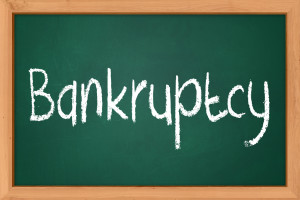
This page contains general information. Contact a WBG attorney for specific advice.
Illness, injury, and tough economic times. Financial distress has been a fact of life throughout history. How should society respond? The answer our Founding Fathers gave was bankruptcy. United States Constitution, Article 1, Section 8, Clause 4.
Bankruptcy gives people and businesses the opportunity for a “fresh start” by refinancing, reducing, or wiping out debt. You can look at bankruptcy as a type of lawsuit, with the debtor on one side and creditors on the other side. The debtor seeks a fresh start. Creditors seek to obtain as large a payment as possible from the debtor. The bankruptcy judge resolves any disputes.
United States law offers four principal types of bankruptcy. All four types begin with a petition and a complete disclosure of debts and assets.
Chapter 7. In Chapter 7 the debtor seeks a discharge of debt without payment. An appointed trustee looks for debtor assets to sell for the benefit of creditors. Entities can file for Chapter 7 but do not receive a discharge. More about Chapter 7.
Chapter 11. Chapter 11 allows individuals and entities to re-amortize and, in many cases, reduce debt. The debtor proposes a plan on which creditors vote. If enough creditors support the plan then the judge may approve it. An approved plan establishes the debtor’s new obligations to creditors. Chapter 11 cases tend to be more complicated and expensive than Chapter 12 and Chapter 13 cases.
Chapter 12. Only farmers and fishermen can file for Chapter 12 relief. Chapter 12 is much like a Chapter 13 except that the debtor may re-amortize debt beyond the three to five year plan period.
Chapter 13. Only individuals (not entities) can file for Chapter 13 protection. The debtor proposes a payment plan that stretches over three to five years. The plan becomes effective if the judge approves it. At the end of the plan the court discharges any debt not paid during the plan period. More about Chapter 13.
This page contains general information. Contact a WBG attorney for specific advice.
Wisconsin Bankruptcy Guide is provided by law firms designated as Debt Relief Agencies by the federal government because we help people file for relief under the Bankruptcy Code. We also provide other types of debt relief options.
Image credit: StockMonkeys.com
